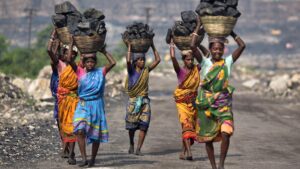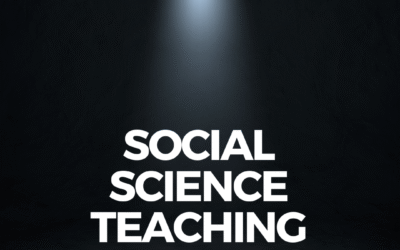Fast-Track Your Project On Women’s Empowerment
How to fast-track your project on women’s empowerment? The project on women’s empowerment is a hot subject everywhere. However, are you unsure of how to begin a project on women’s empowerment? Don’t be concerned; we are here to assist you in finishing your project on women’s empowerment. You must specify the topic and parameters of your project, complete the necessary research, compile your findings, create a cover page, and finally cite your sources for this project on women’s empowerment.
Don’t forget to include in your essay your thoughts on the following topics: feminism, women’s health, gender-based violence, leadership, education, political engagement, and economic empowerment. Don’t forget to write the ending, either.
Introduction
Write the introduction on the first page of your project on women’s empowerment.
You may write or take help from the following paragraph.
Here is an example given for you.
Women empowerment is the process of promoting gender equality and securing women’s rights.
To achieve leadership, education, political participation, economic empowerment, and better access to healthcare while tackling the gender
pay gap and gender-based violence.
However, It involves adopting feminist principles and values to address the historical and systemic discrimination against women.
Also, ensure their full participation and inclusion in all aspects of society.
Women’s empowerment is critical for achieving sustainable development and building a just and equitable world.
Fast-Track Your Project On Women’s Empowerment

women empowerment project
Women’s rights
On the second page of your project, mention women’s rights.
Do not forget to mention a few women’s rights organizations around the world.
You may write it as:
Women’s rights refer to the legal, social, and political entitlements and freedoms that women are entitled to.
These include the right to vote, the right to equal pay, the right to education and healthcare, the right to own property, and the right to live
free from violence and discrimination.
Also, the right to participate in public and political life.
Women’s rights have been recognized and protected by international human rights law.
The Universal Declaration of Human Rights is working for the Elimination of All Forms of Discrimination against Women.
However, women’s rights continue to be violated in many parts of the world.
Therefore, there is an ongoing need to promote and protect these rights to ensure gender equality and justice for all.
Women’s Rights Organizations Around The World
UN Women
The United Nations entity dedicated to gender equality and the empowerment of women.
Women’s International League for Peace and Freedom (WILPF)
An international women’s organization working to promote peace and security through the empowerment of women.
Equality Now
An organization that advocates for the protection and promotion of the human rights of women and girls.
Global Fund for Women
An organization that funds women-led initiatives and movements for gender equality and human rights.
Association for Women’s Rights in Development (AWID)
An international feminist organization that works to promote women’s rights and gender equality.
Women’s Environment and Development Organization (WEDO)
An organization that advocates for gender equality and women’s rights in the context of sustainable development.
Girls Not Brides
A global partnership that works to end child marriage and promote the rights and empowerment of girls and young women.
National Organization for Women (NOW)
A U.S.-based organization that works to advance women’s rights and gender equality through education and advocacy.
Center for Reproductive Rights
An organization that advocates for reproductive rights and access to healthcare for women and girls.
Women’s Learning Partnership (WLP)
An international organization that works to empower women and girls through education, training, and advocacy.
Fast-Track Your Project On Women’s Empowerment

PROJECT ON WOMEN’S EMPOWERMENT
Women Leadership
On your next page mention women’s leadership. You can give some real-life examples.
Also, mention a few successful women leaders of the world in your project.
A paragraph based on the topic is given for your help.
Women leadership refers to the process of women taking up leadership roles in various fields, including politics, business, academia, media,
and the arts.
It involves breaking down barriers that have traditionally excluded women from leadership positions and creating pathways for women to
access and thrive in these roles.
Women’s leadership is crucial for achieving gender equality and advancing social progress.
It allows for diverse perspectives and experiences to be included in decision-making processes.
Women leaders can serve as role models and mentors for other women.
Moreover, they can inspire them to pursue leadership positions and break down gender-based discrimination and inequality.
However, women continue to face significant challenges in achieving leadership roles, including gender bias, stereotypes, and structural
barriers.
Addressing these challenges is critical to promoting women’s leadership and creating a more equitable and inclusive world.
Top ten women leaders
Here are 10 influential women leaders with brief descriptions:
Kamala Harris
The first woman, the first Black American woman, and the first South Asian American woman to be elected Vice President of the United States.
Jacinda Ardern
The Prime Minister of New Zealand and the country’s youngest female leader, known for her empathetic and inclusive leadership style.
Angela Merkel
The first female Chancellor of Germany and a prominent European Union leader, known for her leadership during the Eurozone crisis and the refugee crisis.
Tsai Ing-wen
The first female President of Taiwan and a strong advocate for human rights, democracy, and gender equality.
Ellen Johnson Sirleaf
The first female President of Liberia and the first elected female head of state in Africa, known for her efforts to promote peace and economic
development.
Aung San Suu Kyi
A Nobel Peace Prize laureate and leader of Myanmar’s National League for Democracy party, known for her decades-long struggle for
democracy and human rights.
Sheikh Hasina
The current Prime Minister of Bangladesh and the longest-serving prime minister in the country’s history is known for her efforts to promote
economic development and gender equality.
Michelle Bachelet
The former President of Chile and current United Nations High Commissioner for Human Rights is known for her advocacy for social justice,
gender equality, and LGBT rights.
Christine Lagarde
The first female Managing Director of the International Monetary Fund (IMF) and a former French finance minister, known for her efforts to
promote economic stability and gender equality.
Mary Barra
The CEO of General Motors and the first woman to lead a major global automaker, known for her efforts to promote sustainability and
diversity in the automotive industry.
Fast-Track Your Project On Women’s Empowerment

project on women’s empowerment
women’s education
Women’s education refers to the formal and informal education of girls and women.
This includes early childhood education, primary and secondary education, vocational and technical education, and higher education.
Education is a fundamental human right and is essential for personal development, economic growth, and social progress.
However, women have historically faced significant barriers to education.
Gender disparities in education continue to exist in many parts of the world.
Girls and women often have limited access to educational opportunities and resources.
Addressing these disparities is crucial for promoting gender equality and empowering women.
Therefore, women must actively participate fully in economic, social, and political life.
Efforts to promote women’s education include policy and legislative changes.
Moreover, it also requires community-level initiatives and programs that target vulnerable and marginalized populations.
5 reasons why women must be educated
Here are 5 reasons why women must be educated:
Personal Development
Education is an essential tool for personal development, enabling women to expand their knowledge, skills, and abilities.
Education helps women to build self-confidence.
It also develops critical thinking skills and a sense of empowerment.
This will further allow them to make decisions and take control of their lives.
Economic Empowerment
Education is a key driver of economic growth and development.
Thin further enables women to access higher-paying jobs, start their own businesses, and contribute to their communities.
Educated women are more likely to be financially independent and less likely to experience poverty.
Health and Well-being
Educated women are more likely to have better health outcomes.
This is because they have access to information and resources that help them make informed decisions about their health and well-being.
Educated women are also more likely to have healthier families.
They are better equipped to care for their children and make decisions about their nutrition and health.
Political Participation
Education is essential for political participation.
It enables women to understand and engage in political processes, advocate for their rights, and participate in decision-making.
Educated women are more likely to vote, run for office, and participate in community leadership.
Gender Equality
Education is a key tool for promoting gender equality.
It empowers women to challenge gender norms and stereotypes and advocate for their rights.
Educated women are more likely to be aware of their rights and more likely to demand equal treatment and opportunities.
Education also helps to break down barriers that prevent women from accessing educational and economic opportunities.
Fast-Track Your Project On Women’s Empowerment

WORLD-FAMOUS WOMEN LEADERS
Political Participation & Economic Empowerment
Political participation of women refers to the involvement of women in political activities.
This includes voting, running for office, engaging in political campaigns, and advocating for political causes.
Despite progress in recent years, women continue to face significant barriers in many countries around the world.
Top five women active in politics
Of course, It is difficult to name women who are currently active in politics.
There are many accomplished women leaders around the world.
However, here are top five women who are widely recognized for their significant contributions to the field of politics:
- Angela Merkel – Former Chancellor of Germany
- Kamala Harris – Vice President of the United States
- Jacinda Ardern – Prime Minister of New Zealand
- Sanna Marin – Prime Minister of Finland
- Nicola Sturgeon – First Minister of Scotland
Economic empowerment
It refers to the process of increasing women’s access to and control over economic resources, including income, assets, and employment opportunities.
This can be achieved through a variety of means.
For example, policies that promote gender equality, and access to education and training.
Moreover, financial inclusion and entrepreneurship, and supportive legal and policy frameworks can also protect women’s rights.
The economic empowerment of women is widely recognized as a key driver of sustainable economic growth and development.
Reasons for economic empowerment of women
There are several reasons why the economic empowerment of women is important:
Promotes gender equality
Gender equality is a fundamental human right and empowering women economically is a crucial step toward achieving it.
Reduces poverty
When women have access to income and economic resources, it can help reduce poverty and improve the well-being of families and communities.
Boosts economic growth
Studies have shown that increasing women’s participation in the labor force can lead to significant economic growth and development.
Improves health and education
Economic empowerment of women can lead to better health outcomes and increased access to education, particularly for girls.
Enhances social and political participation
Women’s economic empowerment can also enhance their social and political participation.
It also helps to ensure that their voices are heard in decision-making processes.
Fast-Track Your Project On Women’s Empowerment

women workers in demand due to low wages
Gender Pay Gap
The gender pay gap is the difference in average earnings between men and women in the workforce.
It is typically expressed as a percentage of men’s earnings.
The gender pay gap exists in many countries and across many industries and is often the result of a complex interplay of factors.
Such factors are discrimination, occupational segregation, and differences in education and work experience.
The gender pay gap can have significant economic and social consequences.
For example, perpetuating gender-based poverty and limiting women’s opportunities for economic and professional advancement.
However, many countries have implemented policies and initiatives that aim at reducing the gender pay gap.
Examples are, pay transparency measures, anti-discrimination laws, and affirmative action programs.
Solutions to Gender Pay Gap
Solving the gender pay gap is a complex issue. It requires a multifaceted approach.
However, here are some strategies that can help address this issue:
Implement pay transparency
Ensuring that pay rates are publicly available can help to reduce pay disparities and increase accountability.
Enforce anti-discrimination laws
Laws and regulations prohibit discrimination in the workplace.
It must be enforced to ensure that women are not paid less than men for the same work.
Increase access to education and training
Improving access to education and training for women can help to close the gender pay gap by increasing their skills and qualifications.
Encourage flexible work arrangements
By Providing flexible work arrangements, such as part-time work or telecommuting.
This will help to address the gender pay gap by enabling women to balance work and family responsibilities.
Promote women’s leadership and representation
Encouraging more women to enter leadership roles can help to break down barriers and stereotypes that perpetuate the gender pay gap.
Provide incentives to employers
Governments can provide incentives to employers who take action to reduce the gender pay gap, such as tax credits or preferential
treatment in government contracts.
Fast-Track Your Project On Women’s Empowerment

Project on women’s empowerment
Feminism
Feminism is a social, political, and cultural movement that advocates for gender equality and the rights of women.
Feminists seek to challenge and change the systemic inequalities and discrimination that women have faced throughout history.
The goals of feminism vary depending on the individual or group.
This includes achieving equal pay for women, ending gender-based violence, and ensuring women’s reproductive rights.
Therefore, Feminism also recognizes that gender intersects with other social identities, such as race, class, and sexual orientation, and seeks
to address the ways in which these intersecting forms of oppression affect women differently.
What are the biggest issues in feminism?
Feminism is a diverse movement with many different priorities and issues. However, some of the biggest issues in feminism today include:
Gender-based violence
This includes domestic violence, sexual assault, and harassment, which disproportionately affect women and are often enabled by patriarchal
power structures.
Reproductive rights
Access to reproductive healthcare, including contraception and safe and legal abortion, is a fundamental human right that is often
threatened or denied to women.
Economic inequality
Women are often paid less than men for the same work.
Moreover, they are paid low in industries, which perpetuates poverty and limits their opportunities for economic advancement.
Political representation
Women are often underrepresented in positions of political power, which can limit their ability to effect change and shape policy.
Intersectionality
Feminism recognizes that gender intersects with other social identities.
Such as race, class, and sexual orientation, and seeks to address the ways in which these intersecting forms of oppression affect women
differently.
Environmental justice
The effects of climate change disproportionately impact women, particularly those in marginalized communities, and feminists are working
to address the intersection of gender and environmental issues.
Fast-Track Your Project On Women’s Empowerment

African women suffering from malnutrition
Women’s Health
Women’s health refers to the physical, mental, and social well-being of women. Women have unique health needs that are often different
from those of men, and these needs can vary depending on a range of factors, including age, culture, and individual health status. Some of
the key issues in women’s health include:
Reproductive health
Women require access to comprehensive reproductive healthcare, including contraception, prenatal care, and safe and legal abortion.
Maternal health
Pregnancy and childbirth can pose unique health risks for women, and access to quality maternal healthcare is critical for ensuring healthy
outcomes for both mother and child.
Breast and gynecological health
Women require access to regular breast and gynecological exams to screen for cancer and other health issues.
Mental health
Women are at higher risk for certain mental health conditions, including depression and anxiety, and may face unique challenges related to reproductive and social roles.
Chronic conditions
Women are at higher risk for certain chronic health conditions, such as osteoporosis and autoimmune diseases, which require ongoing management and care.
Social determinants of health
Women’s health is influenced by a range of social factors, including poverty, discrimination, and access to education and employment, which
can impact their access to healthcare and overall health outcomes.
Gender-based violence
Gender-based violence refers to any form of violence or abuse that is directed at an individual based on their gender or sex.
This can include physical, sexual, or psychological violence, and may be perpetrated by an intimate partner, family member, or community
member.
Women and girls are disproportionately affected by gender-based violence, but men and boys can also be victims.
Some examples of gender-based violence include:
Domestic violence
This includes physical, sexual, or emotional abuse that occurs within a domestic or intimate relationship.
Sexual violence
This includes any form of unwanted sexual contact or activity, including rape, sexual assault, and sexual harassment.
Female genital mutilation/cutting
This refers to the practice of cutting or removing the external female genitalia, which can cause a range of physical and psychological health
issues.
Forced marriage
This is used as a means of control or coercion and refers to a marriage in which either one or both partners do not consent to the relationship.
Honor killings
This refers to the murder of a family member, usually a woman, who is believed to have brought shame or dishonor to the family.
Gender-based violence is a human rights violation and a public health issue.
It can have serious physical, psychological, and social consequences for individuals and communities.
Therefore, it requires a comprehensive approach that includes education, advocacy, and policy changes.
Conclusion
In conclusion, women’s empowerment is a critical issue that is essential for achieving gender equality and creating a more just and equitable
world.
Women’s empowerment involves ensuring that women have equal access to education, healthcare, economic opportunities, and political
representation, and are able to make their own choices about their lives and bodies.
Empowering women will contribute to their families, communities, and societies.
They can also help to drive social and economic progress.
Such women will also serve as powerful role models for future generations and inspire others to pursue their goals and dr
However, achieving women’s empowerment is a complex and ongoing process.
It requires sustained effort and investment at all levels of society.
By working together to support women’s empowerment, we can create a more just and equitable world in which all people have the opportunity to reach their full potential.





0 Comments